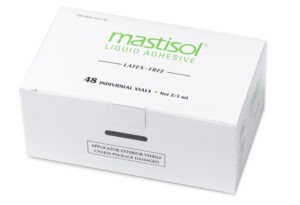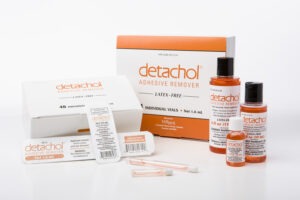 You may remember in the last blog, the considerable number of surgeries performed annually in the US was presented (51.4 million)1, along with the lack of patient satisfaction of scarring after surgeries. Data reviewed revealed that there was a significant amount of patient dissatisfaction with scarring after routine surgeries. Statistics showed that 91% percent of patients would value even small improvements of their post-surgical scars.2
You may remember in the last blog, the considerable number of surgeries performed annually in the US was presented (51.4 million)1, along with the lack of patient satisfaction of scarring after surgeries. Data reviewed revealed that there was a significant amount of patient dissatisfaction with scarring after routine surgeries. Statistics showed that 91% percent of patients would value even small improvements of their post-surgical scars.2
We reviewed the Updated Scar Management Practical Guidelines for Non-invasive and Invasive Measures from the Journal of Plastic, Reconstructive & Aesthetic Surgery, which state that the priority following surgery should always be the prevention of abnormal scar formation.3
Recommendations to reduce skin tension include the following practical tips:
- Use subcutaneous sutures to relieve tension from the overlying skin4
- Use wound-closure strips to reduce tension as well as transient bacterial contamination5
- Use Mastisol® Liquid Adhesive for improved peel-off strength and ensure wound-closure strips stay in place5
Dr. David A. Shifrin is an award winning, Board Certified Plastic Surgeon, respected for his work in cosmetic surgery. Dr. Shifrin is a Fellow of the American College of Surgeons, a member of the American Society of Plastic Surgeons and the highly selective American Society of Aesthetic Plastic Surgeons.
Also an assistant clinical professor with the University of Illinois at Chicago division of plastic surgery, Dr. Shifrin endorses the Scar Management Practical Guidelines, and has seen first-hand how tension reduction—both in layered closings and at the skin junction—can make a significant difference in the appearance of scarring postsurgically.
Dr. Shifrin offers up 3 important scar management guidelines for minimizing the formation of abnormal scar formation6:
- tension reduction
- tension reduction
- tension reduction
Once the incision is closed, Dr. Shifrin cleans the wound appropriately, and uses surgical wound-closure strips to achieve further tension reduction. Wound approximation with surgical wound-closure strips helps to reduce tension on the wound, thereby reducing the potential for scarring. In addition, the use of wound-closure strips reduces transient bacterial contamination.5
 To help keep the wound-closure strips in place, Dr. Shifrin uses Mastisol. In clinical trials, when Mastisol was applied to surgical wound-closure strips, there was statistically improved peel-off strength. The improved peel-off strength when Mastisol is applied ensures that the surgical wound-closure strips remain intact.5 Mastisol also helps stabilize wound-closure strips, which further reduces tension at the incision. Finally, Mastisol has a lower incidence of postoperative contact dermatitis and subsequent skin discoloration.6 Mastisol offers further benefits in that it is non-water soluble, will not stain patient skin or hospital linens, and it helps minimize the risk of infection by creating a lasting occlusive
To help keep the wound-closure strips in place, Dr. Shifrin uses Mastisol. In clinical trials, when Mastisol was applied to surgical wound-closure strips, there was statistically improved peel-off strength. The improved peel-off strength when Mastisol is applied ensures that the surgical wound-closure strips remain intact.5 Mastisol also helps stabilize wound-closure strips, which further reduces tension at the incision. Finally, Mastisol has a lower incidence of postoperative contact dermatitis and subsequent skin discoloration.6 Mastisol offers further benefits in that it is non-water soluble, will not stain patient skin or hospital linens, and it helps minimize the risk of infection by creating a lasting occlusive
barrier.
According to Dr. Shifrin, “If you follow these scar management guidelines using Mastisol to secure the adhesive tape, I am confident you’ll see a difference in your patients’ scars—and they will too.”
 Finally, to help ensure a comprehensive, positive patient experience, don’t forget that Detachol® Adhesive Remover can help remove the wound-closure strips easily, gently, and painlessly.
Finally, to help ensure a comprehensive, positive patient experience, don’t forget that Detachol® Adhesive Remover can help remove the wound-closure strips easily, gently, and painlessly.
For more information about Mastisol and Detachol please contact your sales consultant or Eloquest Healthcare®, Inc., call 1-877-433-7626 or visit www.eloquesthealthcare.com.
Minimizing infection risk is an essential part of optimizing “The Triple Aim” of the Affordable Care Act. Eloquest Healthcare is committed to providing solutions that can help you reduce the risk of conditions like a central line-associated bloodstream infection (CLABSI) and postoperative wound contamination.
Register now to receive blog updates and you’ll receive an email to inform you when a new blog is posted.
References:
- Center for Disease Control and Prevention. www.cdc.gov/nchs/data/nhds/4procedures/2010pro4_numberprocedureage.pdf. Accessed 11/14/2017.
- Young VL, Hutchinson J. Insights into patient and clinician concerns about scar appearance: semiquantitative structured surveys. Plast Reconstr Surg. 2009;124:256-265.
- Monstrey S, et al. Updated scar management practical guidelines: non-invasive and invasive measures. J Plast Reconstr Surg. 2014;67:1017-1025.
- Yavuzer R, et al. Reinforcement of subcuticular continuous suture closure with surgical adhesive strips and gum mastic: is there any additional strength provided? Am J Surg. 2005;189:315-318.
- Lesesne CB. The postoperative use of wound adhesives. J Dermatol Surg Oncol. 1992;18:990.
- Shifrin D. Enhanced Wound Closure Techniques: Abdominal Procedures [Video]. Ferndale, MI: Eloquest Healthcare; 2016.







